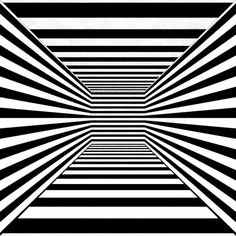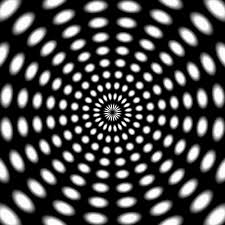|
LITR 4368 Literature of the Future |
Sample answers
for Essay 2:
|
 |
Neil LeBoy
Pop the Cornucopian; A Bright Future Awaits
How
can we make the future better? Is it possible to extract knowledge from future
literature that helps society imagine a progressive future? As the world’s
population grows at tremendous rate, future technologies must be developed to
sustain prosperous living conditions. My midterm essay focused on certain
technological ideas that could possibly improve future scenarios including 3D
printers, and personal ideas of technological advancements. The midterm lacked
certain real-world problems in the stories including the lack of electricity
available to the characters in, Parable
of the Sower, as mentioned in Dr. White’s response to my midterm. Available
resources in different future scenarios can provide examples of communities that
fail, and those that succeed. This paper will focus on the Cornucopian vs.
Doomer debate researched in my midterm by examining the available resources and
technologies of different future societies.
First, let's begin with a simple
examination of resources available in one future society. The futuristic story,
Drapes and Folds by Audrey Ferber,
holds an abundance of high-tech technologies that provide resources for a
prosperous life. Communication devices called, "word ribbons" are placed in
every household. (Ferber 126) Nipples with a variety of taste options are placed
on the wall that provide "adequate fuel" (128) for the 100 year old characters
in the story. The nipple technology corresponds directly with the meaning of
Cornucopia mentioned in my midterm, “The term cornucopia has its roots in Greek
mythology. It translates to the “horn of plenty”, which magically supplied its
owner with endless food and drink” (web). The story also mentions unsuccessful
attempts at feeding the growing population including "ninety pound, six breasted
chicken" that caused human deformation, and a "Pasta Project" (134).The society
is not a utopia or perfect for the characters, and the exact size of the
remaining population remains unclear. Overall, the story avoids the apocalyptic
nature of the Doomer's ideology by providing adequate resources for the
characters.
A key
concept for Cornucopian achievement is technology. The YouTube video link on the
course website, "Humans Need Not Apply", showed technologies impact from the
past to today's future. Despite the growing population humans have to do less
and less. The narrator comments on how "we have gone from everyone needed to
make food, to almost nobody needing to make food" (web video). Who needs to make
food with fast food on every corner? The animated film
Wall--E contains a future vision with
this exact type of society. The citizens in a future spaceship have technology
provide every resource for them, even movement. It is realistic to picture life
becoming easier with advancing technology, but as the YouTube video says,
"mechanical minds might soon take the place of human minds" (Web). Certain
future scenarios provide technology with feelings and intelligence, like Xena in
Drapes. The thought of technology
leading to a dooming apocalypse without human assistance remains in the realm of
science fiction, for now.
Previous researchers help provide metaphors of the battle between Doomers and
Gloomers. In Jeet Heer's article, "The New Utopians", the ideas of catastrophic
visions of the future are compared to the hopes for a utopia. Keets compares his
thoughts to the utopian novelist Kim Stanley Robinson. They acknowledge,
"There's a real possibility that humanity won't get its act together to solve
core problems" (Keets 20). It is easy to imagine society crumbling into the
apocalyptic future scenarios demonstrated in "Stone Lives" and "Parable of the
Sower". Also, the Doomers may be right; a near-future catastrophe is always
possible due to uncontrollable circumstances. A disease might begin tomorrow
that wipes out humanity, aliens might attack, or the ever popular nuclear
holocaust. Keet explains how Robinson challenges readers to imagine a future
utopia despite these possible catastrophes. In an almost Cornucopian view, Keets
quotes one of Robinson's interviews on the future in 2009, "imagine what it
might be like if we did things well enough to say to our kids, we did our best"
(7). These views are remarkably similar to the ideas of Larry Wilcox in the
midterm. Why focus on possible future catastrophes when society can attempt to
create a bright future.
To
examine a personal, and collective approach to future learnings I will examine
my personal future vision from our class. I recently presented a future vision
with no electricity and primitive lifestyles; comparable to the future vision
found in the reading by Robert Silverburg's "House of Bones". The society would
function on primitive tools and dance all night. Despite my urge to visit the
past/future society while reading the story, I do not have a "zeller rainbow"
(Silverberg 107) to travel back in time on. Almost immediately two main problems
arose in the class with my vision. First, it would only work with a small
community. With more people comes the lack of community agreement. Second,
conflict and technological change would be unavoidable. Even on the small scale
of our class of 20 students arguments arose on how the tribe would deal with
rule breakers and competing tribes. Not to mention the majority of the class
proclaimed they would be unwilling to part with modern day technological
conveniences including electricity. This brought me to a daunting conclusion on
our collective future. A future sustaining a large population is realistically
impossible without technology. So personally, I am working to shift my views to
imagine a technological driven utopia.
It is
difficult to determine the amount of resources that will be available in the
future. Future literature can provide ideas on how to use the resources that do
remain in different future scenarios. High-tech devices including the feeding
nipples from Drapes and Folds, and 3D
Printers, and other tools from science fiction could possibly alive the needs of
our growing population. Technology is already advancing at a highly rapid rate
to supply the needs of growing populations as shown in, “Humans Need Not Apply”.
The optimistic Cornucopian philosophy is proving to be possible. There is always
a realistic possibility of a global catastrophe as promised by the Doomers, but
there is also the possibility of a bright future. It may not be the low-tech
utopian society of my dreams, but I’ll settle for a collective future based on
technology and knowledge that provides a prosperous society for future
generations. It is our job to provide resources that reach past our personal
futures. By doing this the Cornucopians will pop, and the apocalyptic future
narrative so popular in literature can be avoided in reality.




